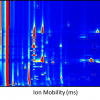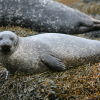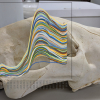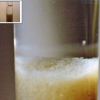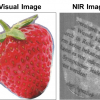William J. Foley
Evolution, Ecology and Genetics, Research School of Biology, Australian National University, Canberra 0200, Australia
Introduction
Imagine going to the supermarket to do your daily shopping unsure about being poisoned by the food on the shelves. Imagine having to first identify the aisles that contained the poisonous foods and those that did not and then having to choose between two apparently identical packets, one of which was toxic and the other not. To make it even harder, the toxicity of your choices can change seasonally or even after a short shower of rain! And then imagine if, when you went on vacation, all the foods were different with different types of toxins and some of them so strange that you were not sure exactly how to eat them!
This situation faces herbivorous mammals every day; browsing mammals, including both domestic stock and wild species, have to be able to choose a diet that contains adequate amounts of nutrients, while at the same time avoiding being poisoned by the myriad of potentially toxic constituents present in plants.
Nearly all species of browse (trees and shrubs) contain different kinds of toxins and making the right choices is essential if animals are to survive and flourish. Even individual plants within a species vary widely in the level of toxins that they contain.
For example, in some Australian eucalypts one branch of a single tree can be palatable whereas others are not (Figure 1). The concentration of alkaloids in some herbs can vary rapidly throughout the day and even in response to a short rain shower and animals may face difficulties when they migrate or are forced to move as part of stock management or though wildlife translocation programmes. Even dairy cows moved from feedlots where grain is presented on a conveyor belt have to learn how to eat grass when they are released into a paddock!

NIR spectroscopy for plant nutrient analysis underwater and in the trees
The enormous variability in the concentration of plant toxins and nutrients in trees, shrubs and forbs requires extensive sampling to accurately represent the nutritional and toxicological landscape and this is an ideal application for quantitative near infrared (NIR) reflectance spectroscopy. The speed of NIR spectroscopy analysis makes it ideally suited to environmental monitoring and ecological investigations where large numbers of replicates need to be measured. Several recent studies, including one focused on underwater plants on the Great Barrier Reef and the second in Bolivian rainforests, show the power of NIR spectroscopy to address large-scale variability in plant–animal interactions.
Dugongs are large (200 kg) marine herbivores that feed mostly on seagrass. Seagrasses are monocotyledonous plants that grow in the intertidal zone but also at depths of up to 30 m. Large herds of dugongs can congregate on seagrass meadows and make repeated, short dives where they graze the leaves of the seagrasses or even uproot and eat the whole plant. We were interested in whether grazing by dugongs improved the quality of the re-growth—in other words, were they able to “farm” seagrass meadows to maintain quality? Using NIR spectroscopy to analyse nutritional components in about 1200 seagrass samples showed that this was indeed the case.1 Grazing by dugongs improved the nutritional quality of meadows significantly. Many other species use seagrass meadows and regular grazing by dugongs is likely to have effects on the whole community of seagrass-dependent species.
A second study sought to understand the impact on logging on populations of black spider monkeys in Bolivian rainforests.2 Annika Felton followed black spider monkeys, observed their food choices and either retrieved freshly dropped fruit and leaves or else climbed to the canopy to retrieve it. Because it was so important to analyse exactly the parts that the monkeys were eating, in many cases, we only had a small amount of material. Fortunately, we were able to develop robust NIR spectroscopy calibration equations to predict the chemical composition and in particular the amount of protein that was available to the monkeys. Annika found that spider monkeys aimed for a target amount of protein each day, regardless of whether they only ate ripe fruit or mixed in other vegetable matter as well and she was able to recommend a selective logging regime that preserved the most important resources in the forest.
Although rainforest logging can be highly destructive for tree dwelling mammals, this story had a happy ending. During the study, Annika and her husband Adam discovered a new species of titi monkey and, in conjunction with the Wildlife Conservation Society, auctioned the naming rights to raise funds ($US650,000) to employ park rangers in perpetuity. The animal is now known as the Golden Palace monkey3 (Callicebus aureipalatii) after the Golden Palace (online) Casino!
Animal foraging as a complex, self-organising process
Being able to analyse the chemical composition of plants has made extensive field studies of the diets of wild animals quicker and cheaper. However, we need to stop and ask why are we analysing the chemical properties of plants? The reason is that we believe that plant chemistry is a suitable proxy for animal performance. In other words, variations in protein, fibre and different toxins have predictable impacts on the overall nutritional quality of the plant and the likelihood that an animal will eat it. While this is true in a broad sense, predicting the interactions between different constituents of foods is very difficult. For example, plant tannins reduce the amount of protein that is available to animals but exactly how to measure this remains unclear despite years of research. We can measure the tannins separately (using one of many different assays that all give different results) and the protein, and we can even use NIR spectroscopy to measure a variety of functional assays of protein precipitation capacity with good precision, but we never really know whether these measures reflect the way that wild animals perceive foods.
The other reason for complexity in animal food choices is that their choices don’t derive only from the physical and chemical properties of food but also from their lifetime experiences. Animals learn about foods in the womb, they observe their mothers, their peers and they use trial and error. Early efforts at predicting herbivore diet choices perceived them as physical machines that could be modelled mathematically. However, every animal is unique, not only through individual genetic variation that influences traits such as gut size, and the breadth of the incisors but also through their experiences. They learn to eat and reject foods by linking the taste or smell of a food with the consequences. Trying to encapsulate this into laboratory measures of chemistry is not easy. If we are to capture the real interaction between plant composition and animal choices, we need to ask the animal! The only way that they can “tell” us is via a series of captive feeding experiments, but we can use these data together with NIR spectra of the foods eaten to model animal food preferences. This is what we have done with koalas and eucalypts.
NIR spectroscopy reveals how koalas perceive a forest
Koalas are not difficult to keep in captivity so long as you have access to a variety of good quality Eucalyptus leaf and that you can climb trees well enough to cut it from the crown. Ben Moore and Karen Marsh held koalas in captivity at the Phillip Island Koala Conservation Centre in Victoria, Australia, and fed groups of four animals more than 100 different eucalypts of three different species. The amount that each koala voluntarily ate during a single day was recorded and samples of the leaf were collected for NIR spectral and chemical analysis.
![Figure 2. Comparison of two models for predicting feeding rates [measured as dry matter intake (DMI)] of captive koalas. The statistical model (left) is based on concentrations of known nutrients and antifeedants in the foliage and the NIR model (right) is based on PLS regression of foliar spectra (Ben Moore and William Foley, unpublished data).](/sites/default/files/articles/NIR-21_5-F2.gif)
Although koalas are one animal for which we do understand the relation between toxins and feeding, the models of feeding based on NIR spectra were much superior to the models based on multiple chemical traits for predicting how much the animals would eat (Figure 2). This suggests that the spectra capture compositional data much better than combinations of individual chemical traits ever can. Models of feeding preferences based on NIR spectra capture both the chemical complexity in nutrients and toxins but also variation in the behaviour of animals. With these data, we could construct the first “koala-eye view” of a Eucalyptus forest, which revealed hitherto undetected spatial patterning in food trees. We validated the approach by eavesdropping on koalas using collars that transmit back the sound of their chewing and were able to show that our NIR models were robust and ranked trees in a similar order to koalas in the wild. Although this sounds a very neat way of doing things, radio stations from India occasionally interrupted the data and sometimes the chewing data was interspersed with long periods of koalas snoring the day away!
Indirect measurements of diet quality from faeces
Clearly the ability of NIR spectra to capture animal preferences in this way is a powerful way to understand how food quality varies across the landscape. But to do so accurately, depends on us knowing what plants animals actually eat. NIR spectroscopy has had only moderate success in identifying the plants an animal has consumed. Nonetheless, if an animal has already made its choices, can we predict the quality of the diet consumed from what it leaves behind?

Using animal faeces to predict quality of the food eaten is an indirect use of qualitative NIR analysis. This approach was pioneered by Jerry Stuth4 and has now been applied to cattle, goats, deer, ostriches, sheep donkeys and kangaroos (Figure 3). The relationship between the spectra of the faeces and the quality of the diet consumed are established though captive feeding studies and enable aspects such as the protein content of the diet consumed by completely free-ranging animals to be predicted. For example by monitoring the protein content of the diet, graziers know when to provide supplements and change stocking rates and Stuth and his colleague Doug Tolleson were able to provide a two-day turn-around for faecal samples mailed to them by graziers! Several researchers have attempted to extend the range of attributes predicted from faecal spectra to include weight gain, parasite burdens and reproductive status. Although these are very exciting developments, users of faecal NIR technology should be aware that the errors in such an indirect approach are certainly greater than with standard quantitative NIR analysis where the accuracy of the reference variables can be established. A recent review by Rob Dixon and David Coates5 of the faecal NIR spectroscopy approach in cattle describes these and other sources of error, but provided these are understood the use of this technique will continue to grow.
Airborne NIR spectroscopy
Intensive studies such as those described above help to understand choices made by animals over small-range scales. However, increasingly we are asked to describe patterns of variation over whole forest landscapes. At these scales, conventional laboratory or even field portable NIR spectroscopy is no longer adequate and so we have started to develop airborne hyperspectral imaging as a means of quantifying nutrients in forest canopies. There are several suitable instruments available, but AVIRIS (Airborne Visible/Infrared Imaging Spectrometer, NASA Jet Propulsion Laboratory, California Institute of Technology, USA) and HyMap (Integrated Spectronics Pty. Ltd, NSW, Australia) are the mostly widely used. These instruments deliver calibrated images of the upwelling spectral radiance in 128 (HyMap) or 224 (AVIRIS) contiguous spectral bands with wavelengths from 400 nm to 2500 nm. HyMap flies at 2000–4000 m above ground level with each pixel having a resolution of 0.5–10 m but AVIRIS has operated from up to 20 km above ground.
In our work on mapping nutrients in Eucalyptus forests, the main issue is knowing what we are imaging. Eucalyptus forests (unlike pine forests where most earlier studies were conducted) have very open crowns and so each pixel may include the tree leaves of interest but also the tree trunk and bark, bare ground and grass or even the kangaroo asleep under the tree! This complexity requires significant attention be paid to methods of selecting appropriate pixels for analysis since it is not possible to obtain pure pixels of foliage as one could do in the laboratory.6 Nonetheless, there has been reasonable success in predicting foliar nitrogen in many locations but fewer successes for other foliar components. This is a particular powerful approach for landscape mapping and an area where spectroscopists can make many valuable contributions.
Acknowledgements
Ben Moore, Karen Marsh, Andrew Woolnough, Justin Billing, Ivan Lawler, Lem Aragones, Jane DeGabriel and Annika Felton have all enthusiastically embraced NIR spectroscopy approaches in ecology and their work has led to many of the advances described here. This article is dedicated to the memory of Jerry Stuth; a generous and inspiring mentor.
References
- L.V. Aragones, I.R. Lawler, W.J. Foley and H. Marsh, “Dugong grazing and turtle cropping: grazing optimization in tropical seagrass systems?”, Oecologia 149, 635–647 (2006).
- A.M. Felton, A. Felton, D. Raubenheimer, S.J. Simpson, W.J. Foley, J.T. Wood, I.R. Wallis and D.B. Lindenmayer, “Protein content of diets dictates the daily energy intake of a free-ranging primate”, Behav. Ecol. 20, 685–690 (2009).
- Golden Palace Casino Monkey. http://www.goldenpalacemonkey.com (accessed 21 September 2009).
- R.K. Lyons and J.W. Stuth, “Fecal NIRS equations for predicting diet quality of free-ranging cattle”, J. Range Manage. 45, 238–244 (1992).
- R. Dixon and D. Coates, “Near infrared spectroscopy of faeces to evaluate the nutrition and physiology of herbivores”, J. Near Infrared Spectrosc. 17, 1–31 (2009).
- Z. Huang, B.J. Turner, S.J. Dury, I.R. Wallis and W.J. Foley, “Estimating foliage nitrogen concentration from HYMAP data using continuum removal analysis”, Remote Sens. Environ. 93, 18–29 (2004).












